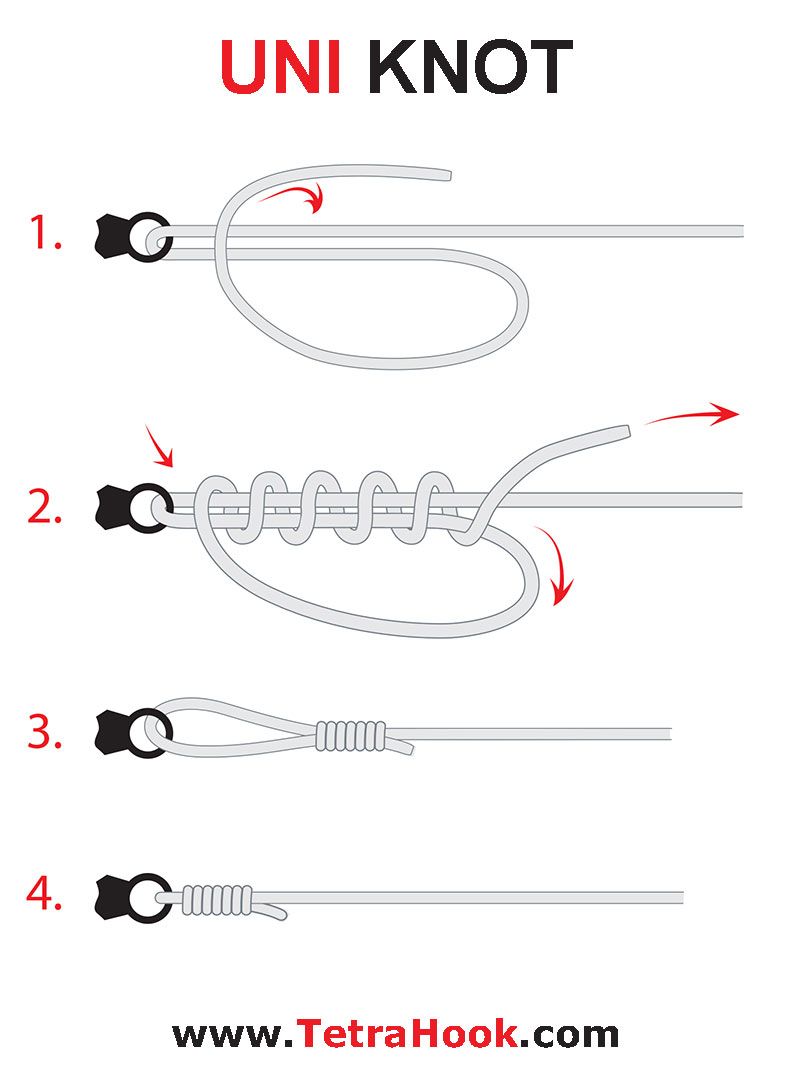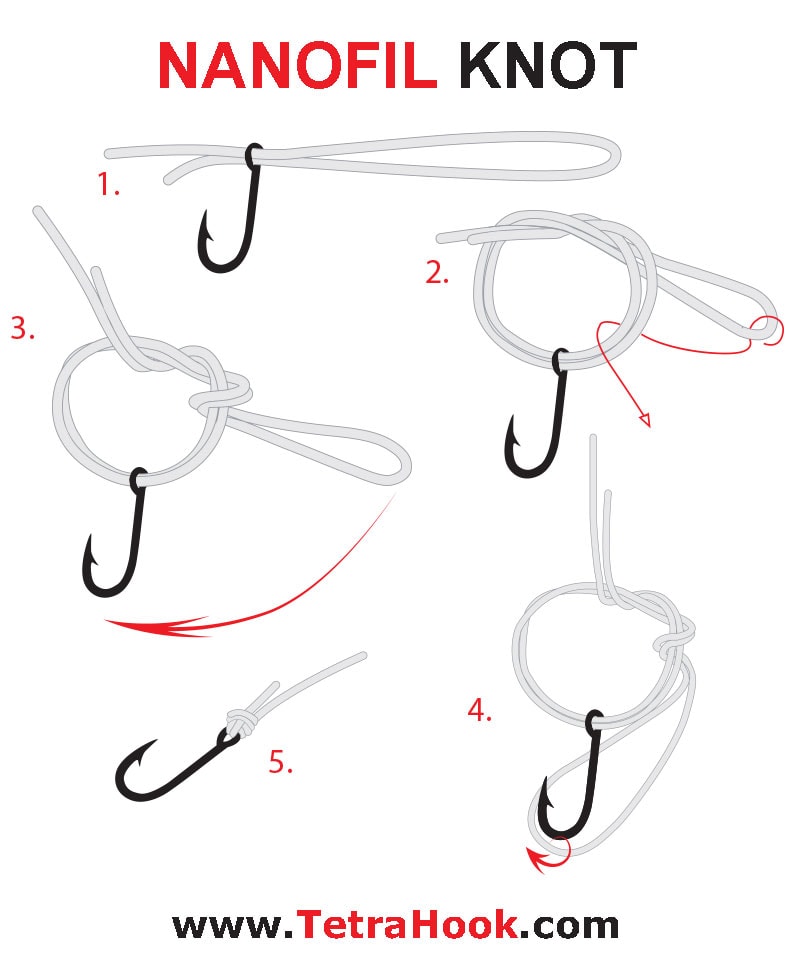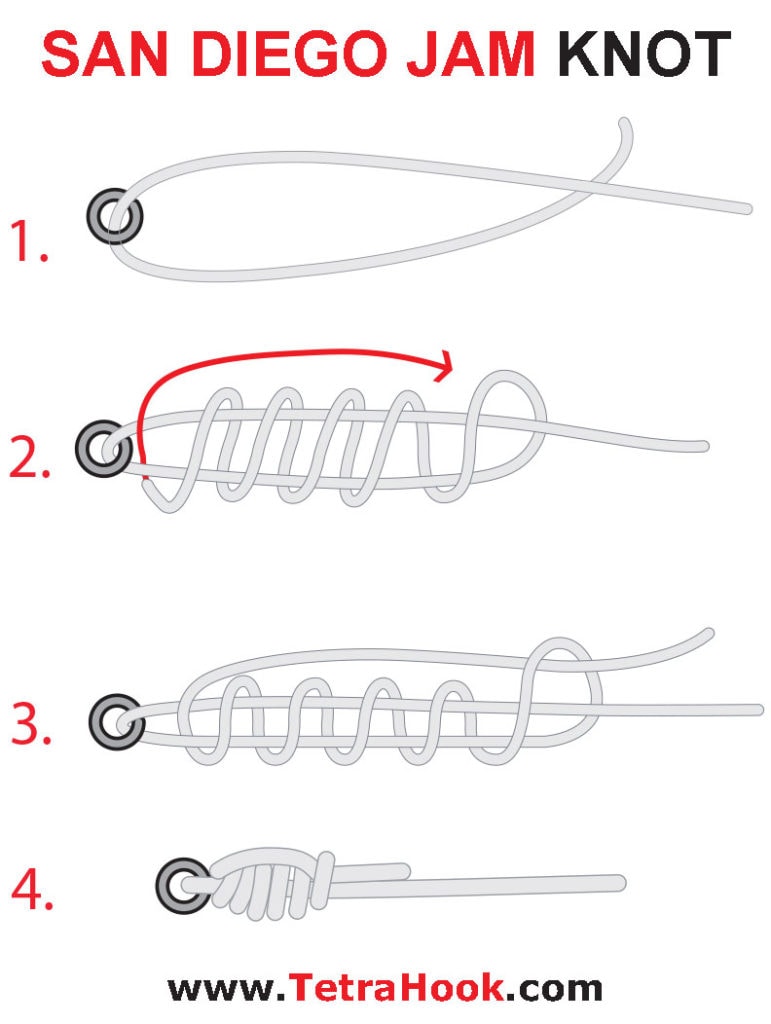
Fishing Knots With Braided Line in 11 Different Easy Ways
Photo from tetrahook
Originally Posted On: 11 Easy ways of Fishing Knots with Braided Line | Tetra Hook
Regardless of what level of fisherman you are, it is always important to have some basic knowledge of the types of fishing knots. If you know the types of knots necessary to master fishing help catch particular types of fishes. Then you will know the best type to tie the fishing knots with braided line.
Only a beginner will hit the waters unarmed with the knowledge of fishing knots. On the other hand, a professional angler will never leave the house to fish without limited knowledge.
You cannot use one knot for every fishing purpose, each knot has a different purpose. Each of these knots is needed to handle and tie the fishing line to the hook. What type of knot will you use? Well, that particularly depends on your fishing preferences.
The following are some of the most important fishing knots that are necessary for catching all types of fishes. I will talk about the most common 11 Ways to Tie Fishing Knots With Braided Line.
- Uni Knot
- Palomar Knot
- Clinch Knot
- Berkley Braid Knot
- Nanofil Knot
- The Trilene Knot
- San Diego Jam Knot
- Blood Knot
- Fisherman’s Knot
- Albright Knot
- J Knot
You can download the complete list of Fishing Knots PDF version.
1) Uni Knot
Uni Knot, commonly known as the “Hangman’s Knot,” is very famous for the monofilament. The uni knot is very helpful when it comes to connecting the leader material to the superfine.
The uni knot is not just best for giving the hook a try, but also for connecting the reel to a line. Another main reason why the uni knot is popular is that it is very easy to tie, plus it is very versatile. Any beginner can get the hand of the uni knot with a minimum amount of effort.

How to Tie
- Cross the line through the double back and the eye, and create a circle from this procedure.
- Make a uni knot by covering the tag end around the double line six times and then enter the loop.
- Straighten the line, and then forward the mainline to tighten the uni knot.
- Forward the mainline to glide the knot down to the level of the swivel or the hook.
Just like that, your uni knot has been tied, and it will come of great help during your fishing ventures.
2) Palomar Knot – Best knot for tying a fishing knot with braided line
Do you want to know which fishing knot type is the best? It is the Palomar knot. This knot just takes the right amount of effort to tie the Palomar knot, and when that happens, the fishing becomes unstoppable.
Note!
Make sure that the lure or hook is passed through the loop entirely and all the areas of the knot join together.
You can see: How to Tie Fishing Knot Palomar?
The knot will lose its purpose if it is tied in the wrong manner. When it comes to tying a fishing Knot with braided lines, the Palomar knot is known to be the best suitable knot type for that particular purpose. In the Pro-Knot Fishing Knot Cards, the Palomar knot has a great place for being the best and most helpful knot type.

How to tie
- Create six double inches of the line and pass it through one end of the hook. For small hooks, only pass the line once.
- Let the hook hang for a while and make a loose knot.
- Hold the overhand knot between your forefinger and thumb, and then pass the line over the hook. Glide the loop above the hook level.
- Pull the standing and the tag line to ensure a strong knot. Clip the tag end and close it.
3) Clinch Knot
It is one of the most widely used fishing knots. It provides a good method of attaching a fishing line to a hook, lure, or swivel. The “improved” version includes an extra tuck under the final turn. It is commonly used to fasten the leader to the fly.
When it comes to the easiest and useful fishing knots, it is the clinch knot. The clinch knot is one of the first fishing knots that every fisherman needs to learn.
The clinch knot is mostly preferred because it is easy to tie, easy to learn, and very simple. This type of knot is widely helpful for speeding up the fishing process.

How to Tie:
- Stuff the line through the level of the hook, fly or lure.
- Create the double back parallel to the existing line and join the two lines together with the help of your forefinger and your thumb.
- Insert your index finger and start twisting and end when seven twists have been made in the line that is at the bottom of the hook.
- Stuff the tag end from the opening behind the hook or fly.
- Straighten the lines and make the knot strong.
- Make sure that the knot is tight.
4) Berkley Braid Knot
The Berkley braid knot is a good choice for tying braided lines to hooks, lures, and leaders. It was developed to retain good knots when using as a fishing knot with braided line strength and to stop braided lines from slipping out of the knot.
If you want to connect the braided line to the terminal tackle, the Berkley braid knot is the best. Many fishermen recommend the usage of the Berkley braid knot to use it with the fireline.
The braided knot will also work best with the super lines because they are slipperier than the monofilament and always need technical knots.
The Berkley braid knot tie is also similar to the San Diego Jam knot, which is also appropriate for braided line usage. On the other hand, the Berkley braid knot is tied with a double line, which ensures security.

How to Tie:
- Make the braided line double and pass the loop through the hook or lure level.
- Make the double back parallel to the existing line and the tag end, afterward; join all of the four lines in one place behind the hook level.
- Wrap the four lines eight times and begin from the back of the hook level. Pass the eight wraps through the “behind hook level.” The way you wrap doesn’t really matter.
- Tight the knot with an even and strong motion. Cut the loop off from the level and even the tag end.
5) Nanofil Knot
The nanofilm knot is also known as the double Palomar knot, but with more strength. The Nanofil knot is best known for providing maximum fishing performance. According to professional fishermen, the nanofilm knot contains millions of nanofilaments which are particularly important for shaping and creating a uniform fishing line.
The profile of the nanofil knot is very thin and very unenthusiastic, but it offers great strength, zero memory, and zero stretches. Just like all other super braids, the nanofil knot is also quite special and slipper compared to other knots.

How to Tie:
- First of all, double the standard line.
- Pass that line through the hook level.
- Create two wraps and pass them through the loop.
- Pass the lure or hook through the double streak.
- Tight the knot to match it with the hook level.
6) The Trilene Knot
The Trilene knot is also known as the two-turn clinch knot. It is a very reliable and strong connection to use when it comes to joining fluorocarbon or monofilament to snaps, artificial lures, swivels, and hooks.
This knot can be considered as the perfect knot, but there are chances of the line breaking when more strength is required. Because of this very reason, the Trilene knot is also similar to the Palomar knot. The Palomar knot is very superior with super and braided lines.

How to Tie:
- Glide the line through the hook level, and perform this process again, enter the line with the same direction and make sure always to create a double loop from the hook level.
- Wrap the existing line with the tag end five times, and then move it away from the lure.
- Pull the tag end backward with the help of the double loop from the hook level.
- Straighten the tie and make it strong.
7) San Diego Jam Knot
The standard San Diego Jam won’t do when you are trying to tie the fishing knot with a Braided line. Therefore, some adjustment needs to be done.
The San Diego Jam knot was first only popular in San Diego, but it later gained a lot of recognition and became popular across anger worldwide. The San Diego Jam Knot is considered to be a very precise knot. In the san Diego knot, the line is attached to the clip, hook, artificial fly, or swivel.
However, the San Diego knot is also known as the Heiliger knot or the clinch knot, and it is appropriate for all kinds of fishing lines which include monofilament, braided, and fluorocarbon. It is not as good as the Palomar knot, but it is still a very reliable knot.

How to Tie:
- Pass the line through the level of the hook.
- Make six wraps around the tag end.
- Pass it from the double line and from the first wrap.
- Moisten and pull the knot.
- Cut off the excess.
- Your not is done.
8) Blood Knot
The blood knot is popular for connecting two braided lines. The blood knot is very famous among fly fishermen. If you want to increase the strength of the knot, you will have to make seven wraps on every side of the knot.
The blood knot works perfectly fine with lines of equal radius. It is with no doubt one of the best fishing knots for professional fishing. It is ideal for joining two lines of the same size together. On the plus side, the blood knot is very easy and simple to learn.

How to Tie:
- Overlap the two lines that need to be joined. Twist one end around the other and make that five times. Position the tag end between the lines.
- Perform the same process with the other end, wrap it in the opposite direction and perform the same number of wraps.
- Pull the lines in different directions gradually. The turns will gather.
- Cut off the excess.
- Your knot is complete
9) Fisherman’s Knot
The main purpose of the fishermen’s knot is to connect two lines of equal radius together within seconds. Fishermen knot is also known as the improved clinch knot. It is a very popular fishing knot technique because back in the days, all anglers knew how to tie this knot.
Once the fishermen’s knot is tied, both of the ropes will become weak and are not appropriate for critical situations.
It is not advised to use the fishermen knot with the slippery ropes.

How to Tie:
- Create a loose knot with one end of a rope and then wrap it around another rope’s end.
- Perform the same process with the end of the other rope and wrap it around the first.
- Pull the ropes together and form a knot.
- Forward the existing parts of the ropes in a different direction to join the knots together.
10) Albright Knot
Albright knot is known to be a very reliable knot for connecting two ropes with unequal radiuses together with materials like braided or monofilament lines.
Professional fly fishermen prefer the Albright knot technique to connect their leader material to the fly line. This is an easy knot to tie, and it is considered to be very popular.

How to Tie:
- Slide the red rope through the blue ring
- Wrap one rope around the other
- Wrap the ropes around each other ten times and then pass the tag end through the circle
- Pull both of the ends in different directions to make the knot strong
- Cut off the surplus tag end
11) J Knot
The J knot is probably one of the strongest fishing knots that ever exist. Linked to the Surgeon’s knot, but the wrapping technique is different, which puts a bit less stress on every line. Many professional fishermen prefer this knot to be the strongest and best fishing knot for connecting purposes.

How to Tie:
- Pass the tag ends of each line parallel to one another
- By holding both of the two lines, make a knot; forward the leader to fulfill the knot.
- Grab the tag end and the leader of your focus line and overlap both of them.
- Straighten the lines and settle the knot together.
Conclusion
All of the fishing knots mentioned above regarding tying the fishing knot with a Braided line are appropriate for various kinds of fishing techniques. The fishing knot technique is depending on your fishing purposes. So, choose the one that fits your requirements best.
You can download the complete list of Fishing Knots Pdf version
